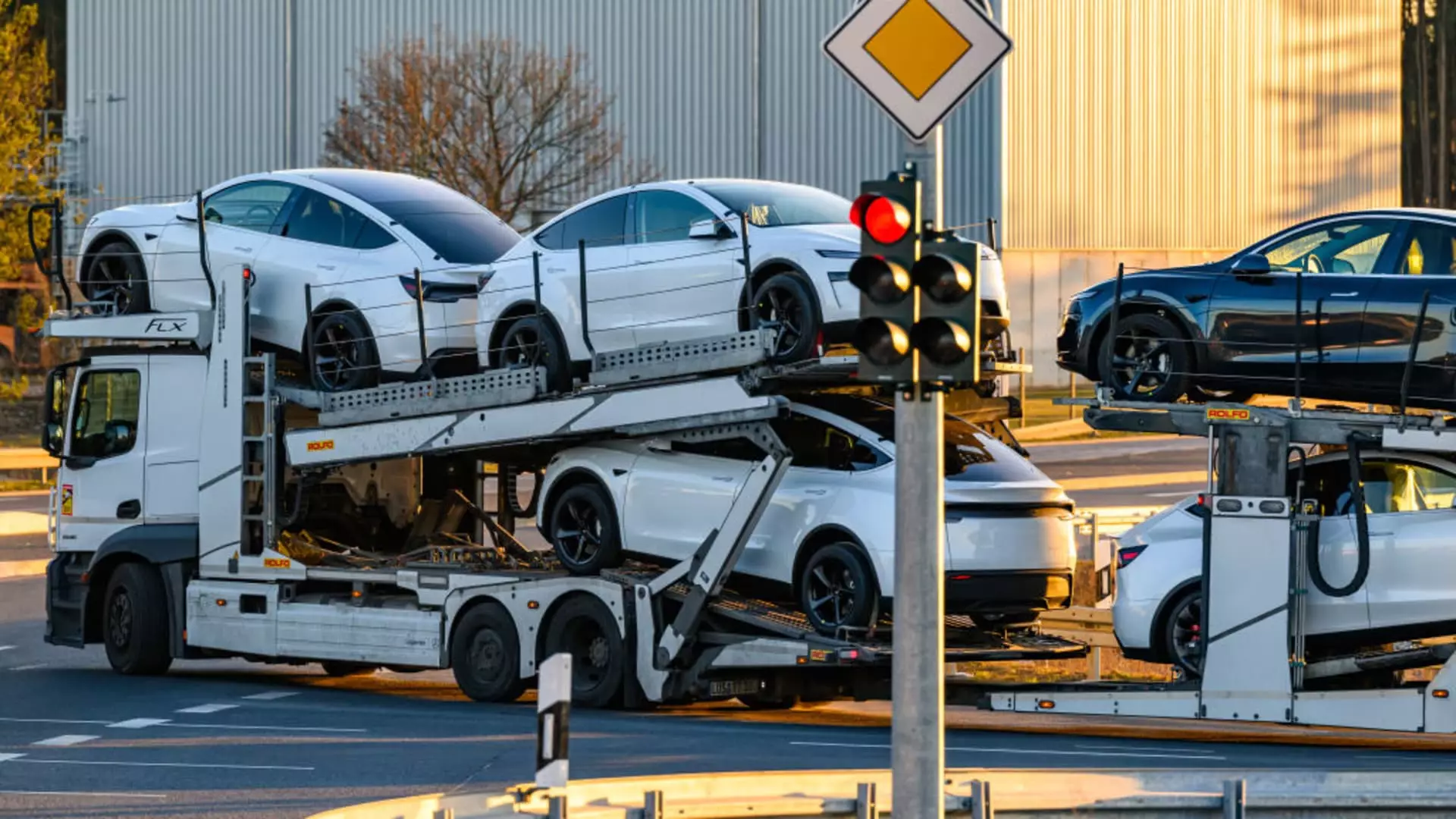Tesla, once a darling of the stock market and a pillar of the electric vehicle (EV) revolution, has recently found itself in a precarious situation. In the first quarter of 2025, the company reported a total of 336,681 vehicle deliveries, reflecting a 13% decline compared to the previous year. This news comes after a dismal quarter in which Tesla’s stock plummeted—a grim 36% drop, marking the sharpest decline since 2022. Such figures paint a troubling portrait of a company that helped ignite the revolution for sustainable transport but now appears to be grappling with both falling numbers and diminishing market dominance.
This adversity was highlighted by the troubling discrepancy between investor expectations and actual performance. Analysts had anticipated deliveries in the range of 360,000 to 370,000, but the reality was far worse—dipping even lower than forecasts made by prediction market firms. This lack of alignment between expectations and outcomes raises serious questions regarding the company’s transparency and operational efficiency. Tesla’s penchant for grand projections is becoming increasingly clouded by reality, and it seems investors are starting to wake up to this disparity.
The Musk Factor: Politics Over Profits?
Elon Musk’s political entanglements have cast a long shadow over Tesla’s performance. His recent involvement with the Department of Government Efficiency, including initiatives to reduce regulations and federal jobs, appears to be courting controversy. This raises concerns about whether Musk is too preoccupied with political ambitions—like pushing the anti-immigration AfD party in Germany—rather than focusing on improving company operations and brand reputation. The scarcely coherent narrative of government involvement has begun to take its toll on consumer perceptions, evidenced by a whirlwind of protests and boycotts against Tesla vehicles. This left many questioning whether the company can withstand the fallout from Musk’s political escapades.
Musk’s leadership style has always been a double-edged sword: it’s inspiring yet prone to volatility. While his charisma may foster innovation and excitement around Tesla products, it also alienates a segment of potential customers and investors. The intersection between Musk’s erratic political behavior and the marketplace is becoming increasingly difficult for Tesla to navigate, and stakeholders must assess whether his approach is beneficial or detrimental to long-term business sustainability.
Competition Intensifies: The Charge from Rivals
As Tesla faces challenges domestically, the landscape for electric vehicles is becoming increasingly competitive on the global stage. Data indicates that Tesla’s market share in Europe has plummeted, going from a commanding 17.9% to a mere 9.3% in just one year. In Germany, a vital market for Tesla, the plunge is even more devastating, collapsing from approximately 16% to a disheartening 4%. The rush of competitors, particularly homegrown manufacturers such as BYD, is effectively chipping away at Tesla’s once-unassailable market position.
The influx of new players into the EV market serves as both a challenge and an opportunity; existing perceptions of Tesla are growing muddled as alternative options become increasingly appealing. Consumers are weighing not just the electric offerings but also brand values, local production, and sustainability efforts, concepts that are starting to haunt Tesla. With stakes this high, changing tides in consumer preferences could prove detrimental to Tesla’s future, particularly if they continue down a path of controversy and damaged reputation.
Production and Innovation: Are They Failing?
Despite boasting impressive production numbers—362,615 vehicles produced—Tesla’s reality is more complex than a mere numbers game. The company pointed out planned factory shutdowns to facilitate upgrades for a redesigned version of the popular Model Y, but these operational adjustments raise questions about the efficacy of Tesla’s production processes. Can they pivot and innovate quickly enough to stay ahead? Or are they trapped in a cycle of continuous adaptation without truly addressing root performance issues? Tesla’s delivery numbers were expected to anchor the company’s future initiatives, but what initially seemed like calculated risk-taking might instead reflect a culture of inconsistency.
It’s baffling that Tesla continues to release sporadic updates without clear definitions of metrics that truly reflect sales performance. What does it mean for an EV leader to report numbers that include broad estimations without clear breakdowns by model or market? The opacity denies stakeholders critical insights they deserve while further perpetuating a cycle of skepticism and anxiety amongst investors.
In Search of a Comeback
Amidst this tumult lies a glimmer of hope for Tesla—the potential comeback of the Model Y as the best-selling car in the world. Yet, whether that optimism holds any real weight might depend largely on how the company navigates its internal and external challenges. Musk’s fervor and promise to manage vast production upgrades need to be met with corresponding action, or else the fears voiced by notable analysts could morph into a harsh reality far beyond financial losses.
As Tesla continues to weather this storm, all eyes remain firmly focused on how they shape their approach going forward. The next steps will determine if Tesla can recalibrate its brand perception and regain its footing in an increasingly competitive marketplace. The stakes have never been higher, and the tolerance for failure is growing thinner with each passing quarter.

